Can You Propagate Forsythia: How To Propagate Forsythia Shrubs
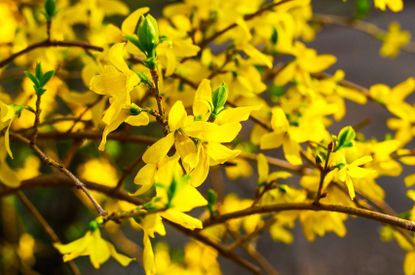

Forsythia bursts into bloom in late winter, well ahead of most other early-season shrubs. They look fantastic in groupings and shrub borders, and they make an attractive informal hedge. If you can't get enough of them, this article will help you with propagating forsythia plants. Layering and cuttings are the two easiest and quickest ways of rooting a forsythia bush. Even beginners will have success with this easy-to-root plant.
Taking Forsythia Cuttings
Prepare a pot before you take your cuttings so they won't dry out while you work. Fill the pot to within one-half inch (1 cm.) of the top with perlite or sand. Moisten the perlite or sand and allow the pot to drain. In June or July, take 4 to 6 inch (10-15 cm.) cuttings from the tips of the current year's growth. Remove the leaves from the lower half of the cutting and dip 2 inches (5 cm.) of the cut end in rooting hormone. Use a pencil to make a hole in the center of the pot and insert the lower end of the cutting in the hole. Make sure no leaves are under or resting on the medium (sand or perlite). Firm up the medium around the base of the cutting. Place the potted cutting inside a plastic bag and seal it. The bag forms a little greenhouse around the cutting and keeps it from drying out. Place it in a warm location, out of direct sunlight. Keep the medium moist, and after a few days, open the top of the bag to let fresh air in. The cutting should have roots after about six to eight weeks and you can transplant it to a larger pot. Transplant the cutting outdoors in spring or fall after hardening it off. Hardening acclimates the plant to outdoor conditions and reduces transplant problems. Harden off forsythia cuttings by exposing them to increasingly longer periods of time outdoors over a period of two weeks.
Rooting a Forsythia Bush by Layering
Layering is perhaps the easiest way to propagate forsythia shrubs. In fact, if you aren't careful about keeping the stems off the ground, the plant may layer itself. Fill a large pot with potting soil and place it near the shrub. Select a stem that is long enough to reach the pot with about a foot (31 cm.) or more to spare. Wound the stem about 10 inches (25 cm.) from the tip by scraping it with a knife and bury the scraped part of the stem under 2 inches (5 cm.) of soil with the tip remaining above the soil. You may need a stone or bent nail to hold the stem in place. Keep the soil moist at all times to encourage roots. Once the plant roots, cut the stem that connects the new plant to the parent plant.
Can You Propagate Forsythia from Seeds?
Forsythia gets off to a slow start when you germinate from seeds, but starting from seeds is an inexpensive method of getting a lot of plants. Growing from seeds gives you a sense of accomplishment and adds a deeper dimension to your gardening hobby. You may not find forsythia seeds in your local garden center, but you can order them online or collect seeds from mature flowers. Start seeds indoors in containers any time of year. Moisten a container filled with potting soil or seed starting medium. You don't want it so wet that you can squeeze water from the soil because the seeds might rot. Place a few seeds on top of the soil in the container and cover them with one-quarter inch (2 cm.) of additional soil. Cover the pot with plastic wrap or place it inside a plastic bag, and place it in a warm location out of direct sunlight. Keep the soil moist and remove the plastic when the seeds germinate. Once you remove the plastic, place the plant in a sunny location. Transplant outdoors in spring or fall.
Gardening tips, videos, info and more delivered right to your inbox!
Sign up for the Gardening Know How newsletter today and receive a free download of our DIY eBook "Bring Your Garden Indoors: 13 DIY Projects For Fall And Winter".

Jackie Carroll has written over 500 articles for Gardening Know How on a wide range of topics.
-
 Elegant Exotics: 8 Beautiful Amaryllis Varieties That Will Brighten Any Holiday Display
Elegant Exotics: 8 Beautiful Amaryllis Varieties That Will Brighten Any Holiday DisplayWhether red, pink, white or variegated, the right amaryllis varieties can enhance any living space, especially during the holidays. We round up eight of the most exquisite
By Bonnie L. Grant
-
 Forage For Herbs: 7 Tasty And Safe Wild Herbs To Pick Close To Your Own Backyard
Forage For Herbs: 7 Tasty And Safe Wild Herbs To Pick Close To Your Own BackyardIn addition to growing your own herbal staples, did you know there are several wild options out there that are safe and tasty – and free? Try foraging these 7 wild herbs
By Amy Grant
-
 Forsythia Winter Damage: How To Treat A Cold Damaged Forsythia
Forsythia Winter Damage: How To Treat A Cold Damaged ForsythiaForsythia plants produce many stems and often need pruning to keep looking their best. Cold or windy winters may injure forsythias, but they usually recover. If you are wondering how to treat a cold damaged forsythia, this article will help.
By Teo Spengler
-
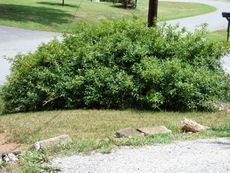 Forsythia Rejuvenation Pruning: Tips On Hard Pruning Forsythia Bushes
Forsythia Rejuvenation Pruning: Tips On Hard Pruning Forsythia BushesForsythias may start out as attractive landscape shrubs, but over time they can lose their luster. Learn more about hard pruning forsythia bushes once they've outgrown their space by clicking on the following article.
By Karen Boness
-
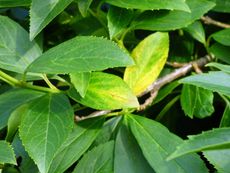 Forsythia Leaves Turning Yellow – Reasons For Yellow Leaves On Forsythia
Forsythia Leaves Turning Yellow – Reasons For Yellow Leaves On ForsythiaIf you see your forsythia leaves turning yellow, it could be a sign of a significant fungal issue. Yellowing forsythia bushes are normal before fall leaf drop but during the growing season it's time for action. Learn more here.
By Bonnie L. Grant
-
 Varieties Of Forsythia: What Are Some Common Forsythia Bush Varieties
Varieties Of Forsythia: What Are Some Common Forsythia Bush VarietiesKnown for its bursts of brilliant yellow color that arrive even before the first leaf unfurls, forsythia is a delight to behold. But what other types are there? Find out about some popular forsythia varieties in this article. Click here for more info.
By Jackie Carroll
-
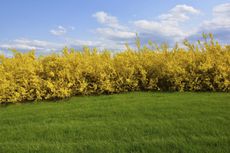 Planting Forsythia Hedges: Tips On Using Forsythia As A Hedge
Planting Forsythia Hedges: Tips On Using Forsythia As A HedgeIf you plan on using forsythia as a hedge, it is important to plant them correctly. This article has information on planting forsythia hedges and forsythia hedge pruning so you can find success with this type of hedge. Click here to learn more.
By Teo Spengler
-
 Tips For Growing A Weeping Forsythia Shrub
Tips For Growing A Weeping Forsythia ShrubA true harbinger of spring, forsythia blooms in late winter or spring. Weeping forsythia is slightly different from its cousin, the border forsythia, in that it has trailing branches. This article explains how to care for this large, graceful shrub.
By Jackie Carroll
-
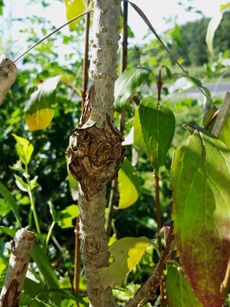 Forsythia Gall Treatment: How To Fix Phomopsis Gall On Forsythia Bush
Forsythia Gall Treatment: How To Fix Phomopsis Gall On Forsythia BushForsythia shrubs are well known for their beauty and tenacity, but even the toughest of these shrubs can become sickly in the presence of phomopsis galls. Read this article to find out how to manage this unsightly fungus.
By Kristi Waterworth
-
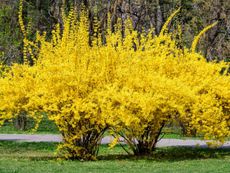 Reasons Why A Forsythia Will Not Bloom
Reasons Why A Forsythia Will Not BloomNothing says spring like those bright yellow blooms. But what happens when spring comes and nothing happens? If there are no blooms on the forsythia bush, it helps to pinpoint the issue. This article will help.
By Jackie Rhoades